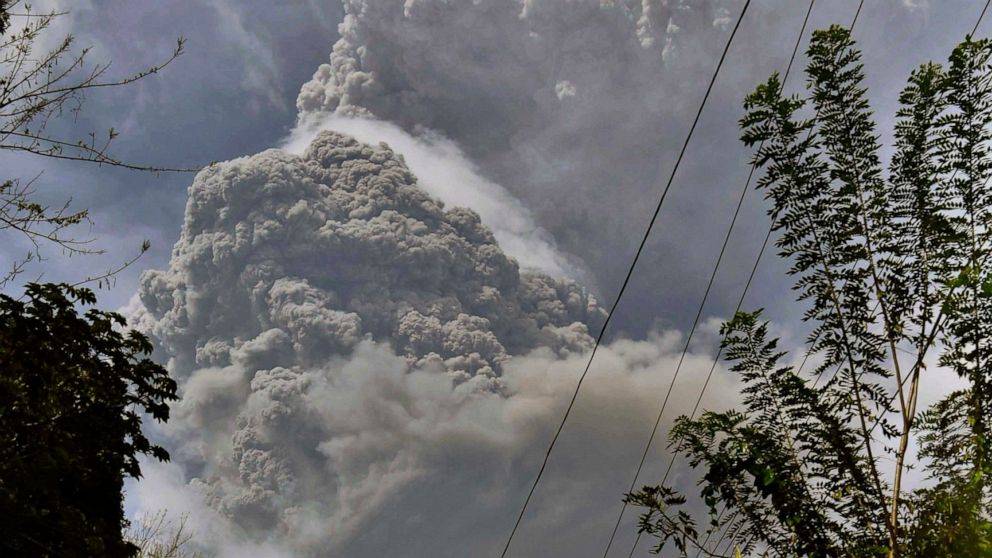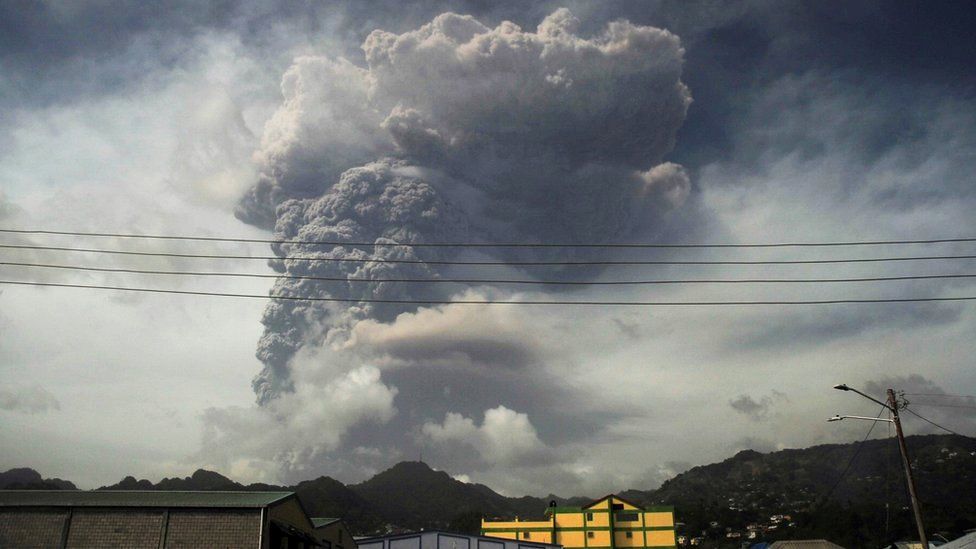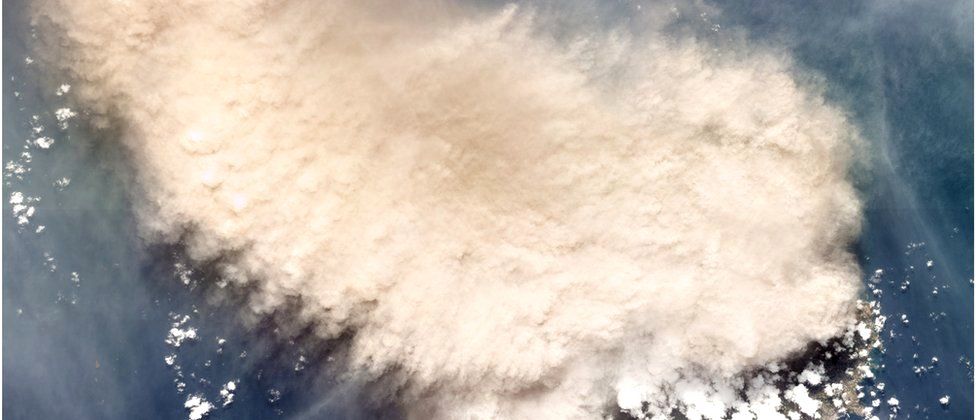There has been another “explosive event” at a volcano on the Caribbean island of St Vincent, with power outages and water supplies cut off.
The La Soufrière volcano first erupted on Friday, blanketing the island in a layer of ash and forcing some 16,000 people to evacuate their homes.

Residents in Barbados, nearly 200km (about 124 miles) to the east, have also been urged to stay indoors.
Scientists warn that eruptions could continue for days – or even weeks.
On Sunday, St Vincent’s emergency management organisation Nemo tweeted: “Massive power outage following another explosive event at La Soufriere Volcano. Lightning, thunder and rumblings. Majority of the country out of power and covered in ash.”

White-coloured dust has covered buildings and roads around the island, including in its capital Kingstown.
How are residents coping?
Nemo is urging people to “be careful on the roads, which have become treacherous as a result of the ash flow”.
Prime Minister Ralph Gonsalves said water supplies to most of the island had been cut off and its airspace closed because of the smoke and thick plumes of volcanic ash moving through the atmosphere.
Mr Gonsalves said thousands of residents had been sleeping in emergency shelters since Friday. “It’s a huge operation that is facing us,” he told NBC News.
He said earlier that a lot of volcanic ash had fallen over the sea. “We don’t know how much more is going to come out… so far, we have done well in that nobody got injured, nobody is dead.
Mazzaltov World News is not responsible for the content of external sites.View original tweet on Twitter
The Barbados Defence Force has been deployed to St Vincent to provide humanitarian assistance as part of a disaster response mission, the Caribbean Disaster Emergency Management Agency said.
Homes across the island, which has a population of around 110,000, have been covered in white-coloured volcanic dust and rock fragments.
It prompted warnings from officials to stay indoors, while emergency groups advised caution for those suffering with respiratory problems.
“Be careful all. We are covered in ash and strong sulphur scents pervade the air. We ask that you take the necessary precautions to remain safe and healthy,” Nemo said.

How is the wider region being affected?
On Barbados, Chief Medical Officer Kenneth George advised residents to “stay in your house”. “This is to protect yourselves and your family,” he said.
People on the island of St Lucia, which is around 76km north of St Vincent, have been warned to expect air quality to be affected, with harmful gases potentially making it harder to breathe for people with conditions such as asthma, the island’s Rodney Bay Medical Centre said.

One resident of St Lucia, Olivia, said she had never witnessed anything like this before and that she was worried about a possible change in wind direction and ash being carried northwards.
“I am terrified of all the effects that are unknown at this point, ash in the middle of a pandemic – no-one is prepared for that,” she said.
“Victoria Hospital has been transformed to become the Respiratory Hospital, and is treating Covid patients” she said, adding: “So technically, persons suffering from the effects of ash inhalation would be on the wards with Covid patients.”
More than 130 people who were due to leave St Vincent for Canada had to be taken by ship to St Lucia on Saturday after becoming stranded when their flight was cancelled.
Other Caribbean countries, including Antigua and Guyana, have offered to send emergency supplies to St Vincent. They also said they would open their borders to those fleeing the fallout from the eruption.
When did the new eruptions begin?
The volcano had been dormant since 1979, but in late 2020 it started spewing steam and smoke and making rumbling noises.
The first sign that an eruption was imminent came on Thursday evening, when a lava dome became visible on La Soufrière.
Just before 09:00 on Friday (13:00 GMT), seismologists from the University of the West Indies confirmed that an “explosive eruption” was under way.